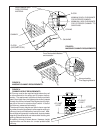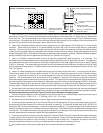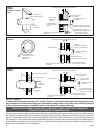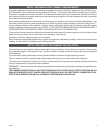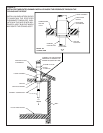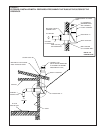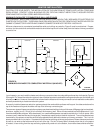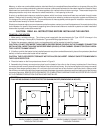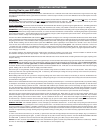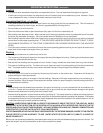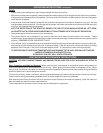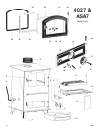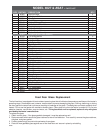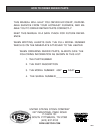
16 USSC
CAUTION! ASHES SHOULD NEVER BE ALLOWED TO ACCUMULATE ABOVE THE TOP OF THE ASH PAN. ASHES
IN CONTACT WITH THE BOTTOM OF THE GRATES ACT AS AN INSULATOR, INTENSIFYING THE HEAT ON THE
GRATES AND COULD CAUSE THEIR WARPAGE. WITH AN EXCESSIVE ASH BUILDUP, PRIMARY COMBUSTION AIR
IS RESTRICTED, THUS THE UNIT’S OUTPUT COULD BE REDUCED.
GRATES DAMAGED IN THIS WAY ARE EASILY RECOGNIZED BY THE EXTREME DAMAGE CAUSED TO THE GRATES.
PLEASE REFER TO YOUR WARRANTY TO SEE UNITED STATES STOVES LIMIT OF LIABILITY IN CASES OF
ABUSE OR NEGLECT.
Bituminous coal produces considerably more ashes than wood, so the intervals between emptying are much shorter. For
equal heat output, coal will produce seven to ten times more ash than wood.
Ashes should never be allowed to accumulate in the ash pit so that they in any way impede the flow of combustion air
to the fire. Excess ash accumulation can cause the fire to go out and also can cause severe damage to the grates
because of the absence of a cooling flow of air beneath them.
Ashes should be placed in a metal container with a tight fitting lid. The closed container of ashes should be placed on
a non-combustible floor or on the ground, well away from all combustible materials, pending final disposal. If the ashes
are disposed of by burial in soil or otherwise locally dispersed, they should be retained in the closed container until all
cinders have thoroughly cooled outside the dwelling.
•
•
Ashes
OPERATING INSTRUCTIONS continued...
Coal should never be added unless there is a reasonable hot fire. The coal bed should be bright and vigorous.
If the fire is burning hot and there is a deep bed of coals, full loads of coal can be added at any time. However, if there
is not a deep bed of coals, it is best to add small amounts of coal at first.
Every effort should be made not to let a coal fire burn too long so that the fire has started to die. This will cause the
reloading process to be much longer, and there is a good possibility of losing the fire.
Do not shake or stir with a low fire.
Open the draft control wide or open the ash door fully open until the fire is reasonably hot.
Start adding small amounts of coal. When the new coal is thoroughly ignited or there is a substantial bed of hot coals,
the stove may be shaken thoroughly. Be sure to shake down all ashes (but do not overshake).
After shaking, keep the bottom draft control open until you are sure the fire is continuing to burn hot, then turn the draft
control down to the proper operating level. IF THE ASH DOOR HAS BEEN OPENED, BE SURE TO SHUT IT (SERI-
OUS DAMAGE CAN RESULT IF THE STOVE IS OPERATED FOR EXTENDED PERIODS WITH THE ASH DOOR
OPEN).
Count the exact number of turns from full shut to the normal operating positions so that you can adjust the stove to the
exact level of heat output and length of burn you desire.
Shaking should be done only when there is a hot fire.
The frequency of shaking will depend on the type of stove and the degree of burning. Shaking should be done at least
once a day, and preferably twice a day.
Best results from shaking with the grates will occur if short “choppy” strokes are used rather than long, even strokes.
The amount of shaking is critical. Too little or too much, either can result in the extinguishing of a fire due to blocked air
flow. The proper amount normally occurs when red coals first start to drop through onto the bed of ashes.
The heat output of the coal is controlled by the primary draft control on the bottom door. Experience will dictate the
proper settings for heat requirements.
Coal responds very slowly to changes in the draft settings. Because of this slow response time, over-correcting is a
common problem. When changes in heat output are needed, make only small changes in the draft setting and wait for
the temperature to stabilize.
•
•
•
•
•
•
•
•
•
•
•
•
•
•
Loading
Increasing Heat From a Low Fire
Shaking
Draft Controls



